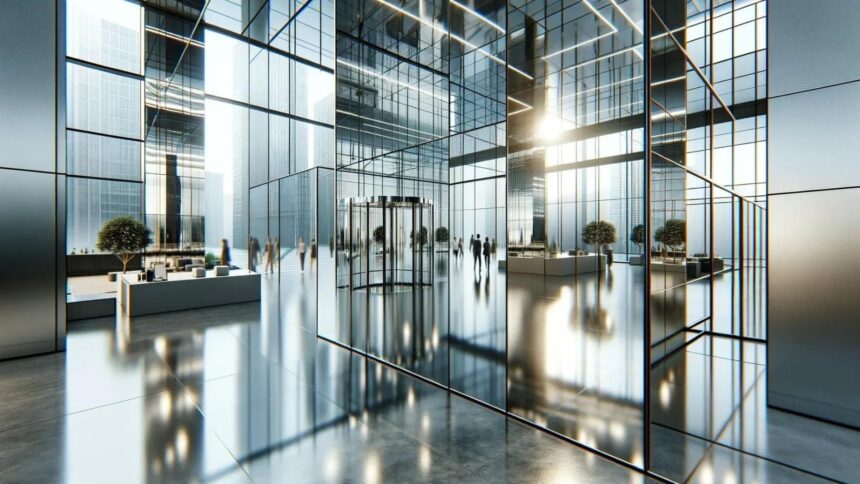Key Takeaways:
- The latest trends in glass solutions emphasize both aesthetics and functionality.
- Innovations in glass enhance energy efficiency and safety in buildings.
- Understanding new developments helps in making informed architectural decisions.
Table of Contents
- Introduction
- The Rise of Smart Glass in Modern Architecture
- Sustainable Glass: A Step Towards Eco-Friendly Buildings
- Impact of Advanced Glazing Techniques on Energy Efficiency
- Customization and Aesthetic Trends in Glass Design
- Safety Innovations: Laminated vs. Tempered Glass
- Cost Considerations and Long-Term Benefits
- Future Prospects of Glass in Architecture
- Conclusion: Embracing the Future of Glass Installations
Introduction
Glass is a crucial material in architecture, redefining modern aesthetics and functionality. It represents innovation and the art of blending form with function, transforming skyscrapers and residential facades into elegant structures. Companies like Kennedy Glass are leading the way in these developments, offering solutions that satisfy the needs of energy efficiency, design, and sustainability. The glass industry is undergoing a transformation that caters to both visual appeal and underlying structural advantages—making spaces more efficient, comfortable, and environmentally friendly.
Innovations in glass technology focus on sustainability, safety, and energy efficiency, transforming building design and influencing architectural decisions. These solutions can enhance living and work environments, contributing to a greener, more sophisticated future by influencing homeowners and commercial entities.
The Rise of Smart Glass in Modern Architecture
Smart glass’s dynamic usefulness and visual appeal revolutionize how we engage with our built surroundings. This advanced material changes properties like transparency or opacity in response to environmental stimuli or user input, making it widely used in residential and commercial spaces. By lowering dependency on artificial lighting and HVAC systems, it also provides better energy management, which reduces energy costs and lessens carbon emissions. Designers and architects increasingly incorporate smart glass into their projects, creating buildings that respond to occupants’ needs and preferences. Iconic structures worldwide showcase smart glass as a hallmark of modern design, highlighting its dual advantages of aesthetic enhancement and functional efficiency.
Sustainable Glass: A Step Towards Eco-Friendly Buildings
Sustainable glass is crucial in green building design, designed to minimize energy consumption and reduce a building’s ecological footprint. It features low-emissivity coatings and specially designed layers, providing superior insulation while maintaining clarity and light transmission. This innovation supports the global trend toward sustainable building by tying structural design and energy conservation together. Numerous case studies show that sustainable glass buildings achieve remarkable energy efficiency, meeting regulatory standards and industry demands for low-energy and eco-friendly construction options. Sustainable glass is a reliable and advantageous choice for architects and builders seeking greener solutions.
Impact of Advanced Glazing Techniques on Energy Efficiency
Advanced glazing techniques significantly improve energy efficiency in modern buildings. These techniques use double or triple layers of glass separated by inert gas fills, providing thermal insulation. They trap heat during winter and reduce heating and cooling interventions during summer, resulting in significant energy savings for residential and commercial property owners. Advanced glazing also improves acoustics by reducing outside noise, particularly in metropolitan areas. As environmental concerns become more important, advanced glazing offers a comprehensive solution that addresses energy, environmental, and comfort needs.
Customization and Aesthetic Trends in Glass Design
Integrating technology and design has revolutionized how glass is customized in architecture. This opens up many options, including custom forms and engraved graphics. Architects can now personalize glass installations to match specific project requirements, enhancing the property’s value and appeal. Glass in architecture reflects creativity and style. As building projects become more complex, customizable solutions enable architects to achieve aesthetic goals without compromising functionality. This trend towards individuality ensures structures meet practical needs while enhancing their uniqueness and visual appeal.
Safety Innovations: Laminated vs. Tempered Glass
Safety is a top priority in building projects, and glass installations are no exception. Innovations in safety glass, such as laminated and tempered glass, provide tailored protection against physical impacts. Laminated glass has multiple layers that hold together during breaking, preventing harm from flying glass shards. Tempered glass undergoes a thermal treatment, increasing its strength and ensuring it shatters into blunt pieces, making it suitable for high-traffic areas or areas with safety. Understanding these types helps in informed decision-making for architectural spaces.
Cost Considerations and Long-Term Benefits
Advanced glass solutions offer long-term benefits such as reduced energy costs, lower maintenance, and increased property value. As energy prices rise, buildings equipped with these solutions will experience tangible economic benefits over time. Modern glass solutions’ durability reduces replacement frequency, making them cost-effective in the long run. This balance between upfront cost and enduring value makes premium glass solutions intelligent investments.
Future Prospects of Glass in Architecture
Technological advancements are transforming the future of glass in architecture, with new technologies like photovoltaic glass and self-cleaning glass coatings promising to expand its functional capabilities. As the world becomes more focused on sustainability and efficiency, glass will become an essential accessory in future building projects. Keeping up with these advancements is crucial for architects, builders, and consumers, as they will play a significant role in integrating new tech innovations into architectural design.
Conclusion: Embracing the Future of Glass Installations
The increasing demand for sustainable, efficient, and aesthetically pleasing buildings necessitates using glass solutions. Advancements in glass technology offer energy conservation, aesthetic enhancement, and increased safety, ensuring functional and future-ready spaces for homeowners and businesses.






